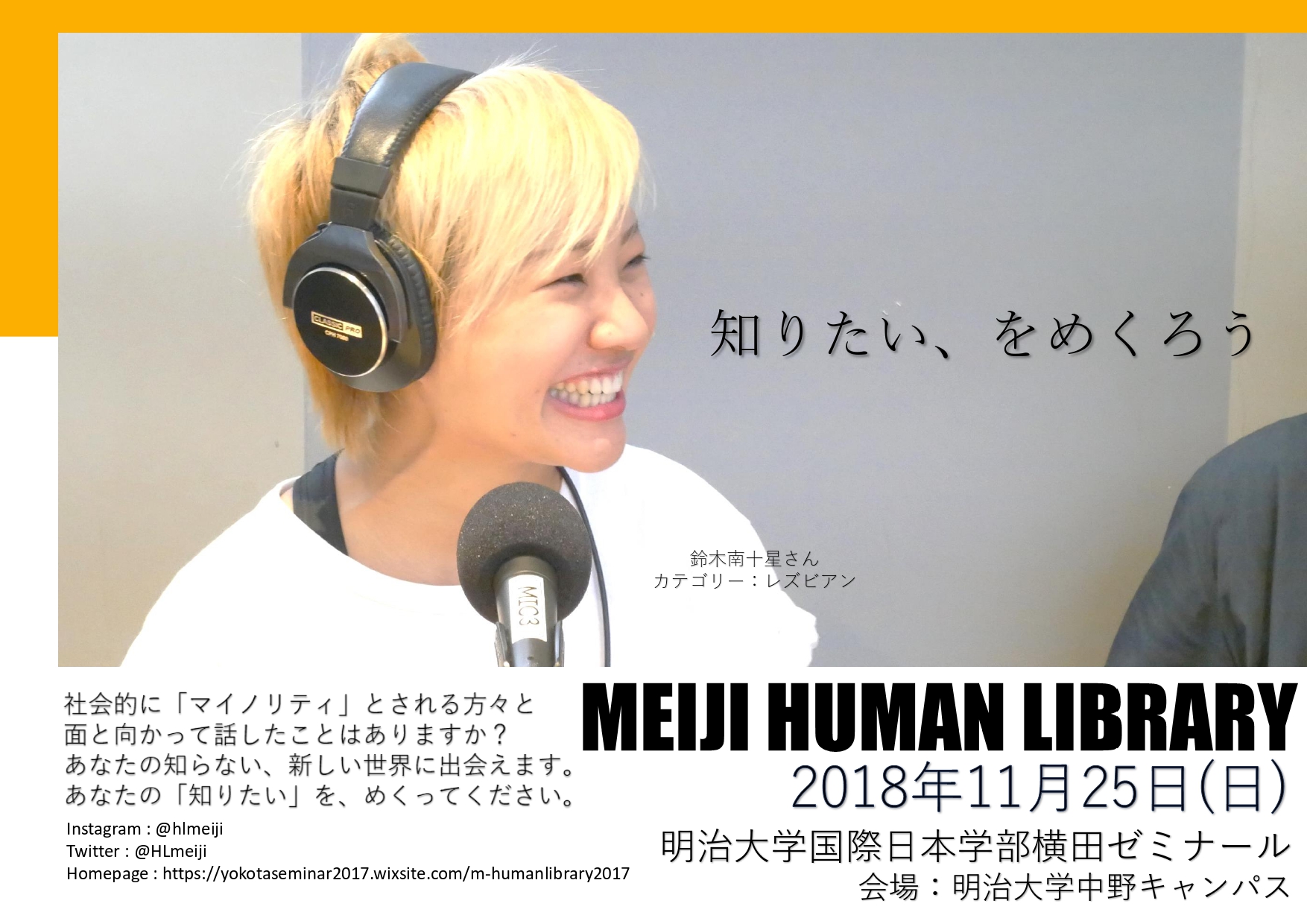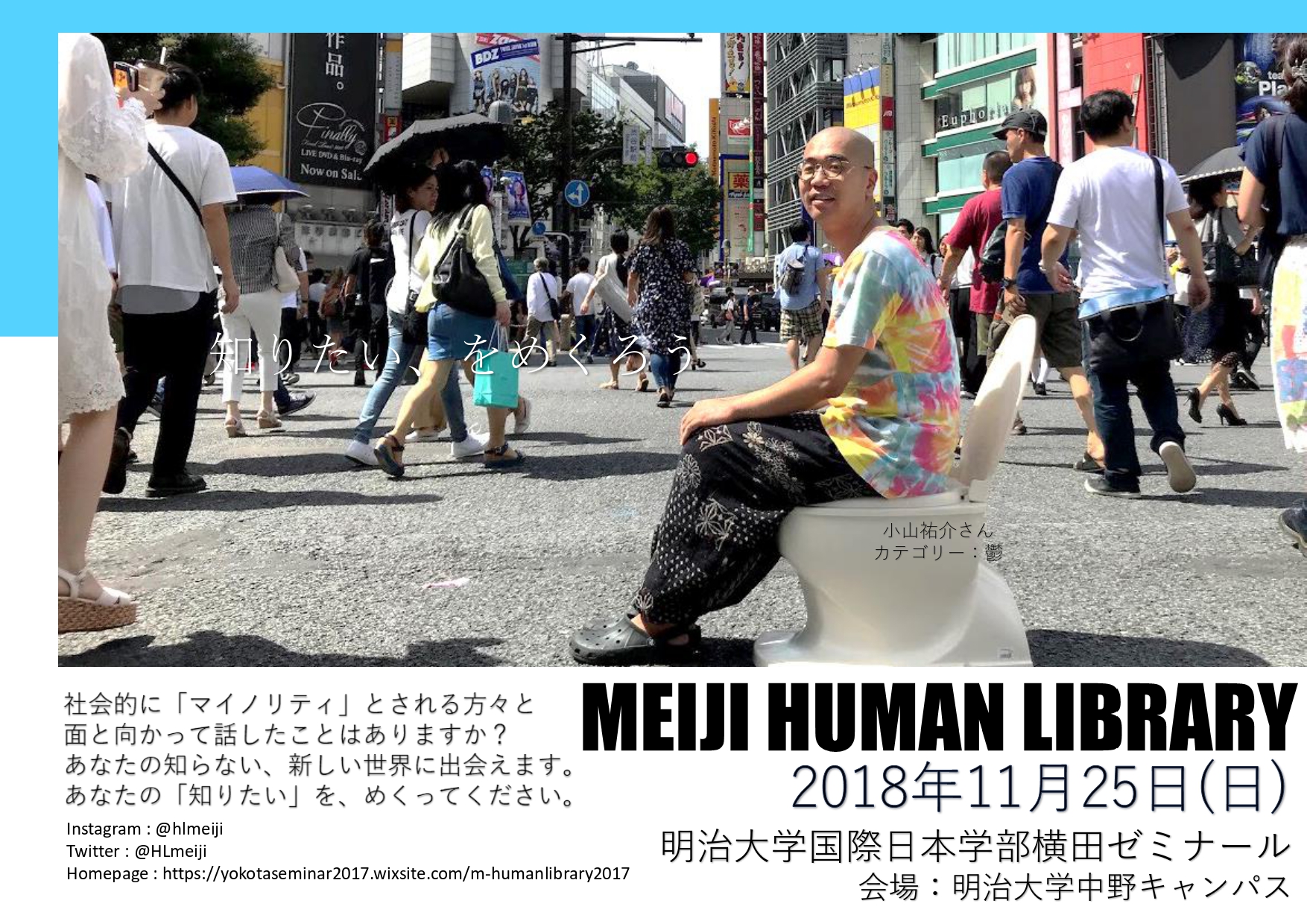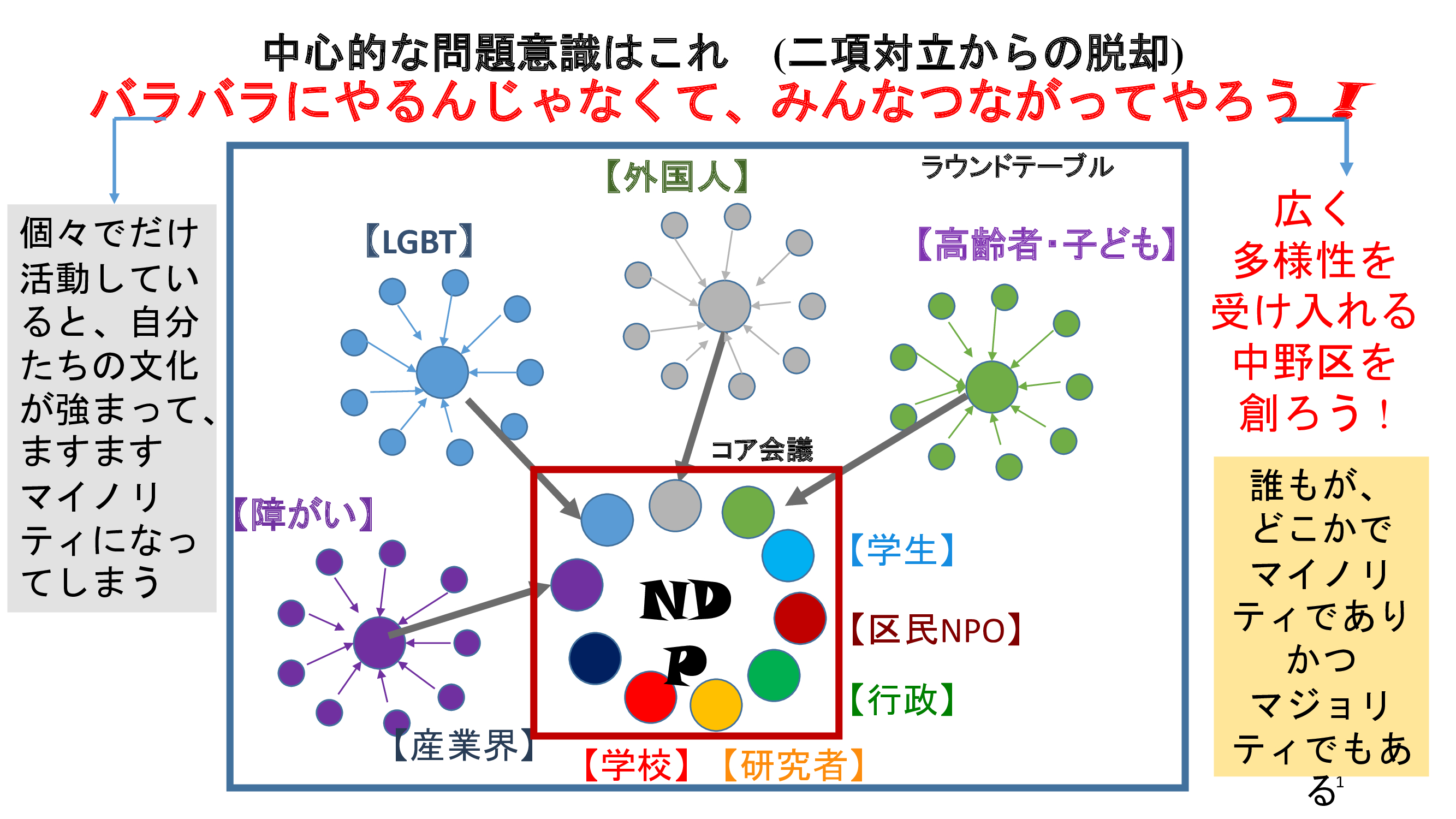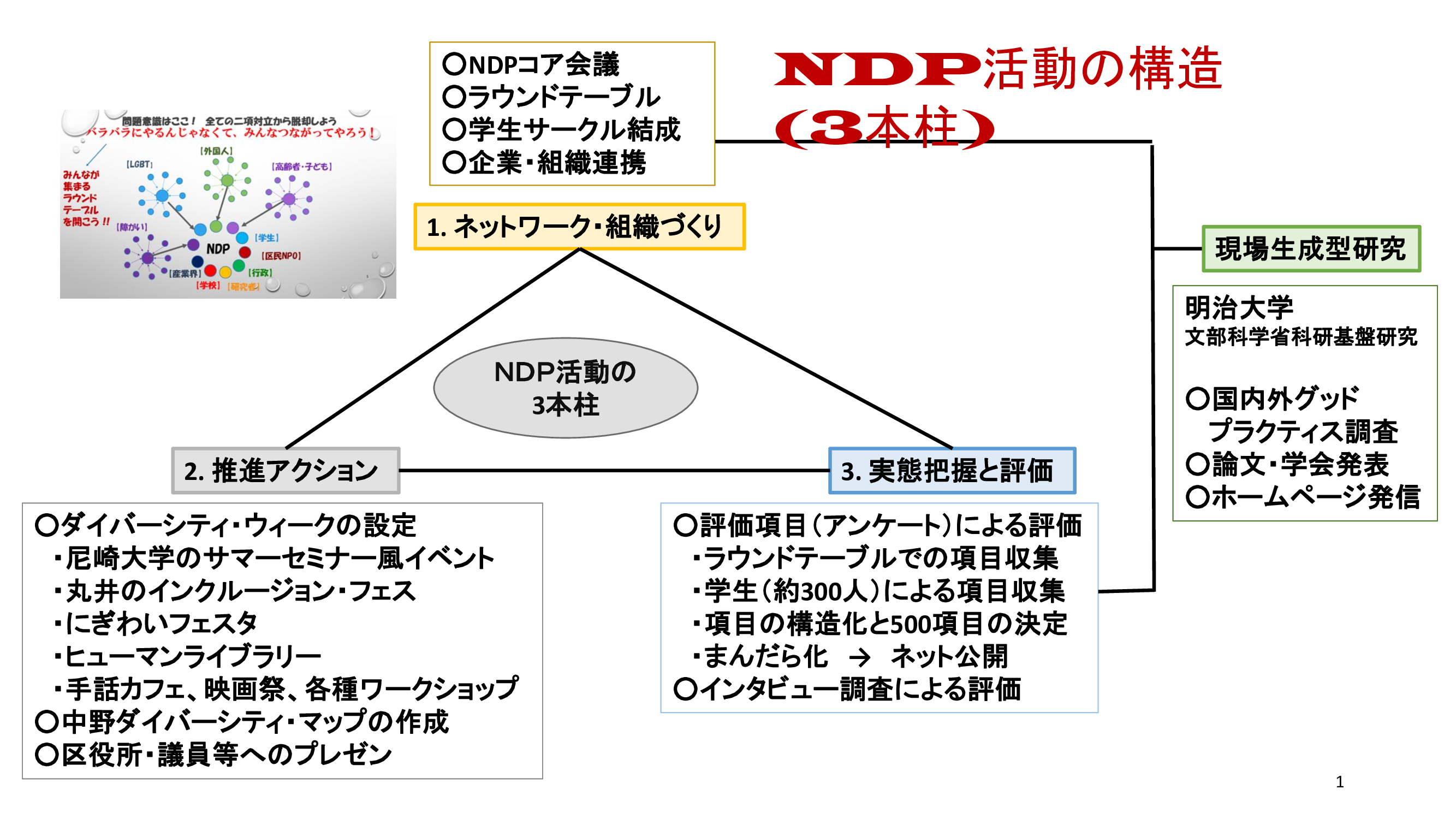Details of the Initiative
For the past 10 years, we have held seminars on “virtual human libraries that lend out people,” which began in Denmark in 2000. Every year, about 30 people tell us their life story as a “book.” There are people from all walks of life, including sexual minorities, the visually impaired, people with prosthetic legs, people with incurable diseases, and refugees. Readers are shaken out of their perspective by having a one-on-one conversation with “book” people. The students took on the responsibility of running this project as librarians. Since 2019, the Nakano Diversity Platform has been running in Nakano City, Tokyo, through a method of field-generated research in which researchers also take part. The platform connects various minorities (individuals and organizations) who have been working separately in Nakano City, as well as NPOs promoting diversity, companies, schools, students, and shopping districts. Its motto is “Let’s not do things separately, let’s all work together.” Through these activities, we are now planning to connect key persons and to connect not only people but also activities: the human library will leave the university for an event in a cafe in the city, collaborating with Art Brut, as ‘raw art’ made outside the academic tradition of fine art, and connecting with the town library where people can bring their favorite books and talk about them.




